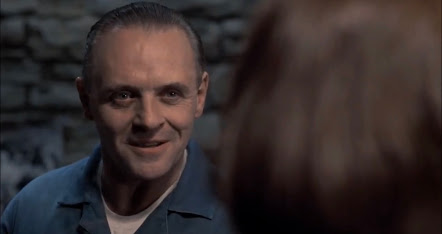There are many theories that explain why we watch films that scare us, they all refer to emotional and conscious fears we have, both on individual and societal levels.
- Dolf Zillman
Excitation-transfer theory purports that residual excitation from one stimulus will amplify the excitatory response to another stimulus, though the hedonistic valences of the stimuli may differ. The excitation-transfer process is not limited to a single emotion. For example, when watching a movie, a viewer may be angered by seeing the hero wronged by the villain, but this initial excitation may intensify the viewer's pleasure in witnessing the villain's punishment later. Thus, although the excitation from the original stimulus of seeing the hero wronged was cognitively accessed as anger, the excitation after the second stimulus of seeing the villain punished is cognitively assessed as pleasure, though part of the excitation from the second stimulus is residual from the first.
- Catharsis (from Greek κάθαρσις, katharsis, meaning "purification" or "cleansing" or "clarification") is the purification and purgation of emotions—particularly pity and fear—through art or any extreme change in emotion that results in renewal and restoration.
- Sigmund Frued
The Psychoanalytic community, including Sigmund Freud himself posited that horror came from the “Uncanny” – emergence of images and thoughts of the primitive id that were being suppressed by the civilized ego. Jung thought that horror movies tapped into primordial archetypes buried deep in our collective subconscious – images like shadow and mother play important role in the horror genre.
- David J. Skal
DJ Skal posits that horror films are a reflection of our societal fears. Looking at the history of horror you have mutant monsters rising in 50s from our fear of the nuclear bogeyman, Zombies in the 60s with Vietnam, Nightmare on Elm Street as a mistrust in authority figures stemming from the Watergate scandals and Zombies again in the 2000s as a reflection of viral pandemic fears.
- Ernst Hartmann
Sees dreams as the brain’s sorting through the bits of information it’s gathered throughout the waking hours. But the images and connections we make while dreaming aren’t totally random, they’re guided by our emotions – maybe working through a recent trauma or dealing with angst and fear.
So perhaps watching a film is somewhere between being awake and being in a dream state. Much like play – films are a safe place where we can sort through stuff, learn skills to apply in everyday life. How do you defeat the a slow walking Jason Vorhees – you can’t outrun his slow stride. The only way is to face him straight on. Though a zombie apocalypse is a far fetched reality, the survivorship skills on display in a zombie horror film have some practical merit in our normal every-day world.
Horror movies require us to face the unknown – to understand it and make it less scary. They allow us to see our fears and put them into context, to play what if, and in doing so, they shape our belief systems, how we see each other and ourselves. They are a safe place to explore and for some just a good bit of fun.
I agree with Dolf Zillmans theory the most out of the five listed above. This is because I agree that seeing one stimuli that creates an impactful emotional response will make for an even dramatically greater response with a second stimuli as there is a residual of the earlier response.
My decision is personally influenced by a film that I have felt this kind of response to, that movie is Jaws, the 1975 classic shark-thriller. Throughout the film, we see the Shark devour people, and one of those people is a child, from the “get out of the water” scene. This scene is frightening and creates a very impactful response as we are saddened to see the child’s mother seeing his deflated inflatable washed up on the beach surrounded by bloody water.
This means that during the film’s climax when the shark is slain, we feel an even greater emotional response because of the boost that the previous response to the stimuli earlier on grants. This gives the audience the 'pleasure' that Dolf Zillmans realizes within his theory, as the audience feels that the shark has been met with its deserved punishment.
(Jaws, 1975)
I disagree with Ernst Hartmann's theory the most because I think that whilst there is relevance to our own personal fears, based on past and traumatic experiences, scary films are frightening on much greater scales. What I mean by this is that I personally think that scary films are more like the way that David J. Skal describes them - Frightening on more societal levels. I don't entirely disagree that everyone will be fearful of things individually, but it makes more sense to me that a scary film will be more terrifying to a wider range of people.


























